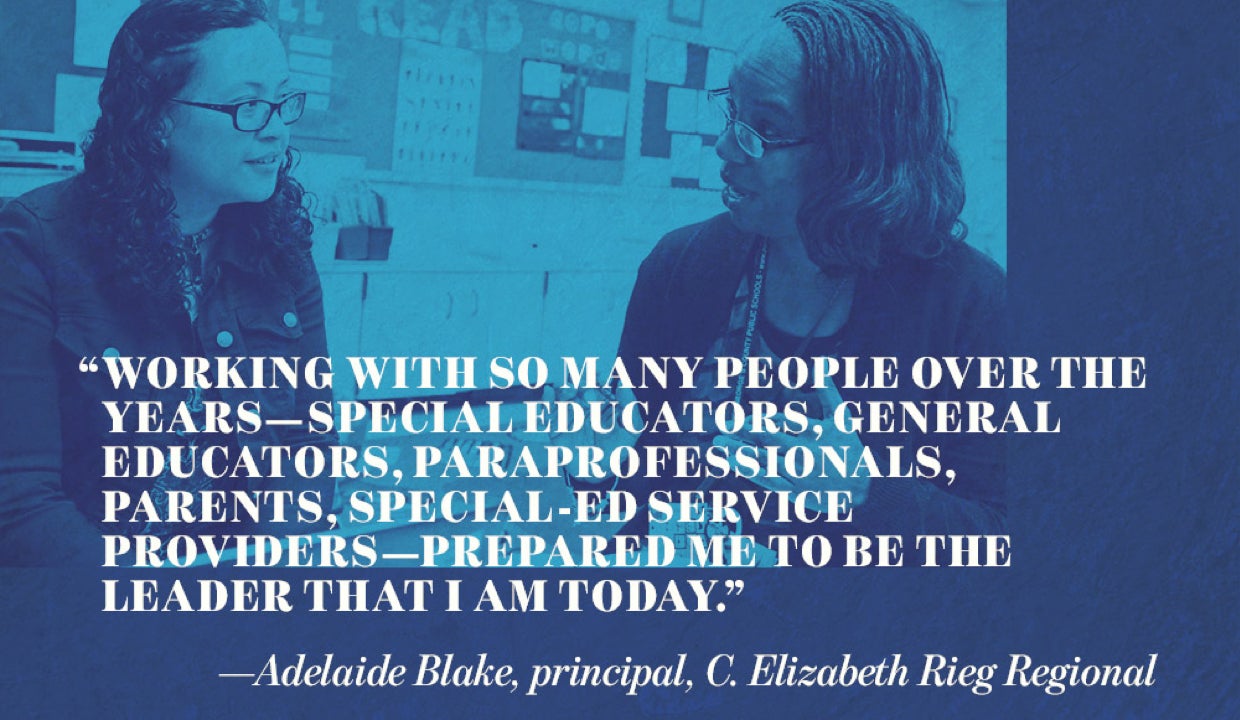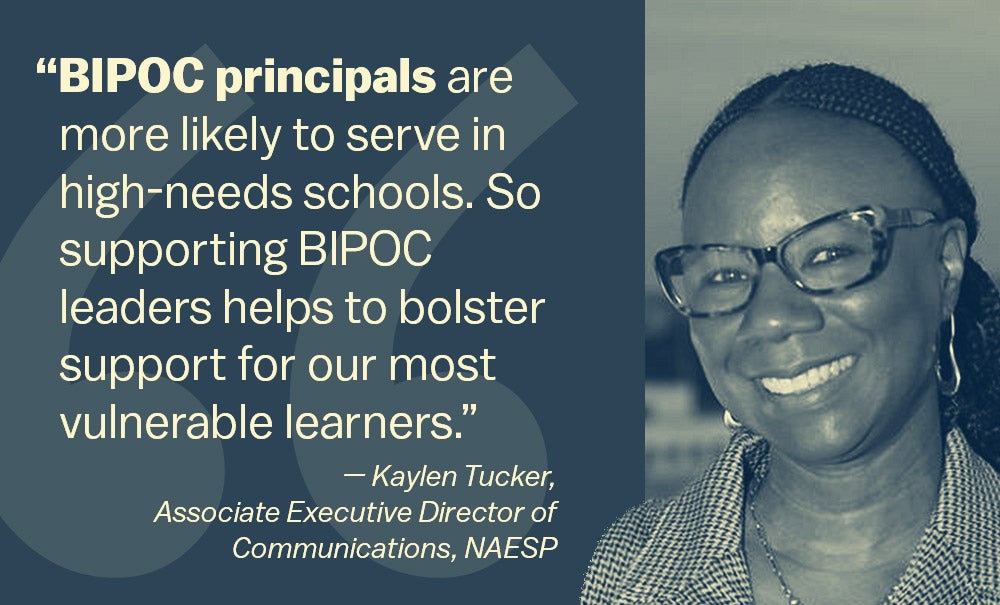A principal pipeline is an approach to school leader development that can have major benefits for school districts, as indicated in groundbreaking research we published recently. Pipelines have four parts—rigorous job standards, high-quality pre-service preparation, selective hiring, and aligned on-the-job support and evaluation. In an occasional series, we examine each of these components by talking to principals in six urban districts that, with Wallace support, tested the pipeline idea. In previous posts, we found out how pre-service training prepared a Georgia principal to improve the graduation rate at his high school, how on-the-job support helped a new principal in North Carolina gain the skills he needed to succeed, and how job standards shaped the leadership development of a principal in Denver. Today, we examine how selective hiring led to a perfect match for a first-time principal and her new school in Prince George’s County, Md., just outside Washington, D.C.
A decade ago, hiring a principal in Prince George’s County Public Schools in Maryland typically meant screening hundreds of applications with little guarantee that the laborious process would turn up someone with the right skills and experience for the job. That’s because anyone with the state-required certification could apply, resulting in a deluge of résumés each time a vacancy was advertised.
But last spring district administrators didn’t have to comb through stacks of submissions to find Adelaide Blake. She was already on their radar. That’s thanks to the way Prince George’s County has changed its approach to principal hiring and placement in recent years so that the district draws job candidates almost exclusively from among a group of professionals who have already been screened to show they are qualified for the job.
Blake was one of those pros. She began her career in the district as a special education teacher in 2007, helping develop a program for children with autism at Seat Pleasant Elementary School in Seat Pleasant, Md. The program flourished under Blake’s leadership, and over time she made a transition into the school’s administration, first as chair of its special education department and later, in 2014, as its assistant principal.
In 2018, Blake was one of four assistant principals in the district selected for a yearlong residency program that pairs would-be principals with experienced leaders in schools. Blake learned the ropes from a veteran principal at Chapel Forge Early Education Center, a preschool in Bowie, Md., where 75 percent of the students have physical or learning disabilities. At first Blake shadowed her mentor, then gradually took charge of running the school. (Her mentor, meanwhile, interned in the central office to explore alternate career paths should she ever decide to step down as principal.)
As her residency drew to a close, Blake received a call from district leaders about a principal opening at C. Elizabeth Rieg Regional, a K-12 school for students with special needs in Mitchellville, Md. Blake interviewed and got the job, which she describes as an excellent fit based on her experience and the school’s needs. “Working with so many people over the years—special educators, general educators, paraprofessionals, parents, special-ed service providers—prepared me to be the leader that I am today,” she says.
Blake got the call from district officials because she was “in the pool,” lingo used by the pipeline districts to describe a group of aspiring school leaders who are eligible for principal jobs. The districts found that instituting a hiring pool served two important purposes. First, it ensures that only high-quality candidates who’ve demonstrated readiness to be effective principals are considered for openings. Most applicants to Prince George’s talent pool have completed one of the district’s leadership programs for aspiring principals, but that alone does not secure entry. They still must pass a range of practical exercises aligned to the district’s leadership standards, such as writing a 90-day “entry plan” as the principal of a hypothetical school to show how they would prioritize needs and draw upon district resources. They’re also asked to watch videos of classroom instruction and explain the feedback they would give to the teacher.
Because Blake was already an acting principal, her assessment wasn’t based on fictional scenarios but on the real work she was doing in her residency. Candidates who ace the practical demonstrations advance to step two, an interview with a panel of principal supervisors and coaches who determine eligibility.
Prince George’s talent pool has also streamlined the hiring process. Rather than posting a vacancy and waiting to see who applies, district managers proactively contact candidates in the pool who are a good match. Sometimes, the process sheds light on areas of expertise that are lacking. While the district usually interviews four candidates for each opening, it only considered Blake and one other person for the principalship at Rieg because they were the only ones with a background in special education. “It’s been an eye opener to see the gaps we have, in areas like language immersion, special education, charter school operations,” says Melissa Ellis, district supervisor of school leadership programs. “We have to address how we’re going to identify the talent to work in these specific types of schools.”
While the right experience is critical, so too are the soft skills that an incoming principal needs to build strong relationships with a school community. To assess that ability, the new superintendent of Prince George’s recently reinstated a community interview as part of the hiring process. Candidates meet with a panel of up to 10 to 12 community members, including teachers, support staff, parents and business partners, to discuss their vision for the school and how to best meet its needs. The top two candidates then sit down individually with the superintendent, who makes the final hiring decision. Blake was nervous about meeting the Rieg community, but says it sent a powerful message that hiring a principal is a collaborative effort. She has emphasized that spirit of collaboration in her work as principal. “I’ve made it very clear that I’m not making decisions alone,” she says. “We as a community are working together to define the mission and core values of our building.”
Photo of Adelaide Blake (above right) by Colby Ware



